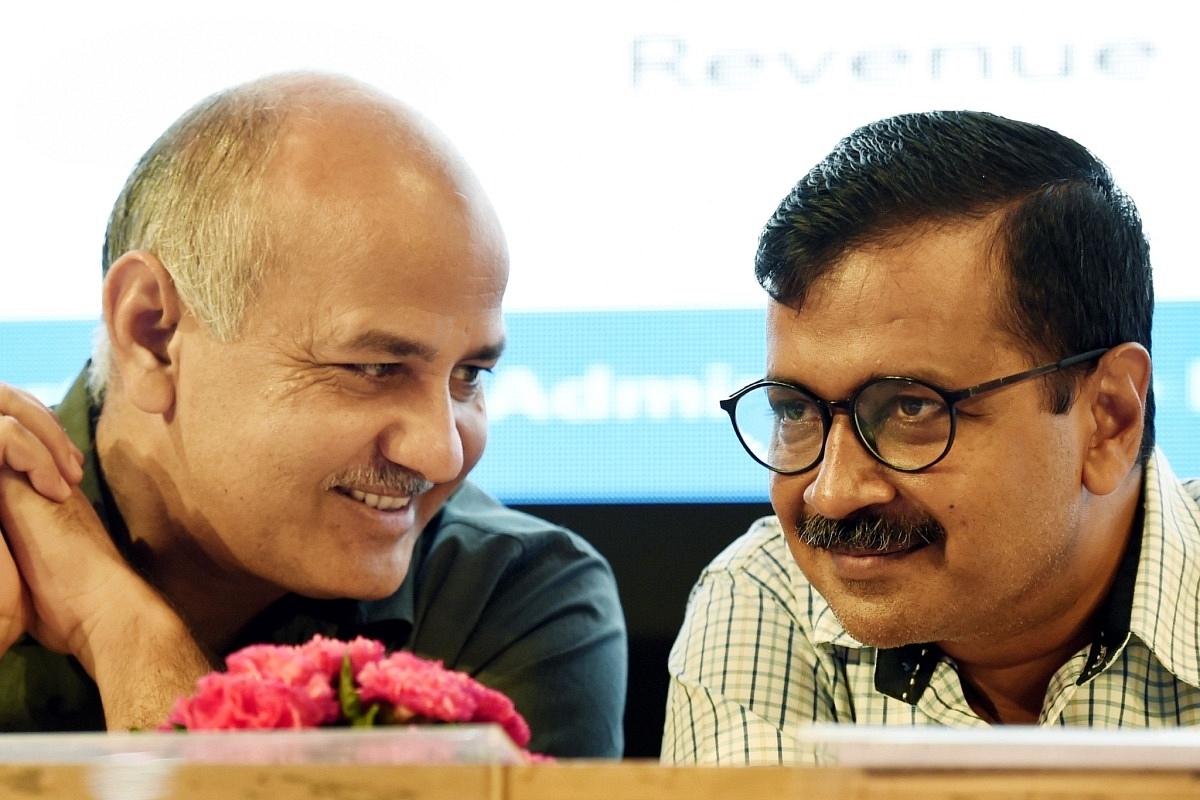Politics
AAP Falls On Its Own Anti-Corruption Sword; But The Failure Is Systemic In Nature
- It is best not to see AAP’s current loss of credibility as only its own problems.
- What it indicates is that the system is simply not good enough to promote probity and clean politics and elections.
- The problems go far beyond AAP.

Delhi Chief Minister Arvind Kejriwal with his former deputy Manish Sisodia. (Arvind Yadav/Hindustan Times via GettyImages)
The precipitous fall in the anti-corruption credentials of the Aam Aadmi Party (AAP) is truly astounding.
That a party built around the idea of probity in public life should see two of its key ministers, Manish Sisodia and Satyendar Jain, resign in Delhi on alleged corruption charges tells us how deep the rot is within this party.
The taint on Sisodia, who was nothing less than Arvind Kejriwal’s right-hand man, is particularly damaging as he held no less than 18 portfolios.
Even though Kejriwal declared in 2015 that he would be the Chief Minister of Delhi (his campaign slogan was “Paanch saal Kejriwal”), in reality, Sisodia ran the Delhi government.
I had pointed this out as early as in 2015 (read here), when Kejriwal did not take charge of any portfolio after his party’s thumping win in the assembly elections.
Kejriwal wanted to focus on the party’s expansion outside Delhi, often using Delhi’s tax revenues to project himself nationally.
Put simply, the exit of Sisodia is the exit of the de facto Chief Minister of Delhi.
The problem is that you can spend only so much from Delhi’s ample tax resources to boost the party’s chances outside Delhi.
Delhi’s high revenue surpluses owe less to Kejriwal’s parsimonious management of the half-state’s finances, and more to the fact that large parts of Delhi’s costs (policing, pensions) are paid out by the Centre.
As a corollary, it should have been obvious to anybody that sooner than later elections have to be won with resources raised not from Delhi’s exchequer, but other means.
The purpose of stating this reality is not to rub salt in AAP’s wounds, but to point out the reality that no party — repeat, no party — can do without unconventional or illegal funding.
When average spends on assembly and parliamentary elections per seat run upwards of Rs 5-10 crore at the minimum. An estimate by the Centre for Media Studies suggested that an average of Rs 100 crore was spent in each Lok Sabha constituency during the 2019 elections, making it the costliest elections ever.
This implies that corruption is key to funding elections.
So how do we get out of this trap?
First, it would be a good idea to offer state funding of elections, at an average of Rs 5 crore per Lok Sabha constituency. The money can be paid out in proportion to the votes garnered by the top three candidates.
While this would not eliminate corruption, it would at least make good candidates bankable without a lot of illegal funding.
Second, the system of electoral bonds introduced by the Bharatiya Janata Party (BJP) in its first term reduced the amount of black money available to parties, but, given its anonymity, it does not help in preventing corruption.
How can we ever know whether a high donation from one anonymous party did not impact policy that favoured him indirectly?
The only way to reduce chances of quid pro quo is to make electoral bonds transparent, where the donor has to reveal his or her identity, and we can at least test the hypothesis whether there was a linkage between donation and policy benefits.
Third, it might be a good idea, in the interests of transparency and greater disclosure, to tax contributions to candidates or parties beyond a certain limit — a limit defined by the Election Commission’s periodic limits on campaign funding.
This will push more candidates to reveal their actual sources of funding and resources devoted to winning elections, something akin to the Election Commission’s diktat asking candidates to declare their assets before filing their candidatures.
At some point, the limits on campaign spending need to become real.
Fourth, and this is the big one, sooner or later we must move towards a presidential form of government. And legislators should be chosen on the basis of party lists, rather than constituency-wise.
Currently, parties are beholden to their marginal members in any close vote, which makes them more amenable to pay-for-vote offers.
A presidential system, with direct elections, and the election of legislators based on party lists, will not only make corruption difficult, but also prevent unholy floor crossings by party legislators.
The number of legislators elected by any party can be proportional to the vote share of the party.
It is best not to see AAP’s current loss of credibility as only its own problems. What it indicates is that the system is simply not good enough to promote probity and clean politics and elections. The problems go far beyond AAP.
Introducing ElectionsHQ + 50 Ground Reports Project
The 2024 elections might seem easy to guess, but there are some important questions that shouldn't be missed.
Do freebies still sway voters? Do people prioritise infrastructure when voting? How will Punjab vote?
The answers to these questions provide great insights into where we, as a country, are headed in the years to come.
Swarajya is starting a project with an aim to do 50 solid ground stories and a smart commentary service on WhatsApp, a one-of-a-kind. We'd love your support during this election season.
Click below to contribute.
Latest